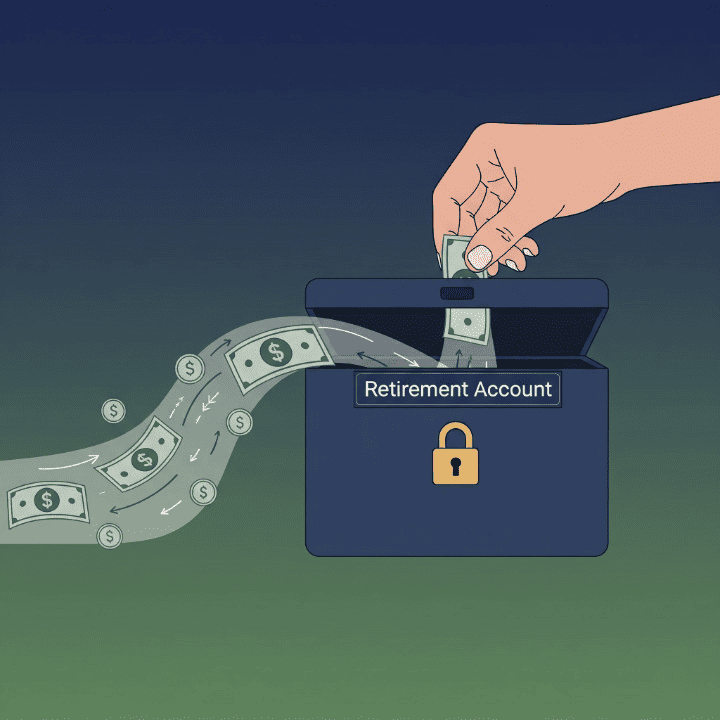
Introduction
For decades, you focused on building your retirement savings. You made consistent contributions to your 401(k) and IRA, watched your money grow, and carefully planned for your golden years. Now, a new phase of retirement planning begins: withdrawing that money. The IRS has a specific set of rules that govern how and when you must take money out of your tax-deferred retirement accounts. These rules are known as Required Minimum Distributions (RMDs). Understanding RMDs is a critical but often confusing part of a sound retirement strategy. Failing to follow these rules can result in significant tax penalties. This comprehensive guide will demystify RMDs, explaining what they are, who they apply to, how to calculate them, and the smart strategies you can use to manage them effectively. Our goal is to empower you to navigate this essential phase of your financial journey with confidence.
What Exactly is a Required Minimum Distribution (RMD)?
A Required Minimum Distribution (RMD) is the minimum amount you must withdraw from certain retirement accounts each year. The IRS created this rule to ensure you pay taxes on the money that has been growing tax-deferred for years. RMDs are a crucial part of the government’s revenue, as they are a way to collect the taxes that were deferred when you made pre-tax contributions.
Which Accounts are Subject to RMDs?
RMD rules apply to the following types of accounts:
- Traditional IRAs: This is the most common account subject to RMDs.
- SEP IRAs: A retirement plan for small businesses and self-employed people.
- SIMPLE IRAs: Another type of retirement plan for small businesses.
- Employer-Sponsored Plans: This includes 401(k)s, 403(b)s, and 457(b)s.
It’s important to note that Roth IRAs are not subject to RMDs during the original owner’s lifetime. This is a significant advantage of Roth accounts, as your money can continue to grow tax-free for your entire life and can be a powerful tool for your legacy planning.
When Do RMDs Begin? The Key Age
For many years, the age to begin taking RMDs was 70½. However, recent legislation has changed this age to reflect longer lifespans.
- If you were born in 1950 or earlier: Your RMD age is 70½.
- If you were born between 1951 and 1959: Your RMD age is 73.
- If you were born in 1960 or later: Your RMD age is 75.
This change gives you more time to let your money grow and is an important factor to consider in your retirement planning strategy.
How to Calculate Your RMD
Calculating your RMD is a straightforward process, but it requires a few key pieces of information. The formula is: RMD = Account Balance / Life Expectancy Factor
Here’s a step-by-step breakdown:
- Find Your Account Balance: The IRS requires you to use the account balance from December 31st of the previous year. For example, to calculate your 2025 RMD, you would use the balance as of December 31, 2024.
- Find Your Life Expectancy Factor: The IRS publishes life expectancy tables to help you with this. You can find them in Publication 590-B. You find your age on the table, and the corresponding factor is the number you will divide by.
- Do the Math: Divide your account balance by your life expectancy factor. The result is the minimum amount you must withdraw for the year.
Example: Let’s say you turned 73 in 2025 and your IRA balance on December 31, 2024, was $500,000. The life expectancy factor for a 73-year-old is 26.5.
- Calculation: $500,000 / 26.5 = $18,867.92
- Result: Your RMD for 2025 would be $18,867.92. You must withdraw at least this amount by December 31, 2025.
What Happens If You Don’t Take Your RMD?
The penalty for failing to take your RMD is severe. The IRS imposes a 25% tax penalty on the amount you failed to withdraw. This penalty can be reduced to 10% if you correct the mistake in a timely manner. The penalties are a key reason why it is so important to understand and comply with the RMD rules.
Smart Strategies for Managing Your RMDs
RMDs are a requirement, but you can manage them in a way that aligns with your financial goals. A proactive approach is always better than a reactive one.
1. The Roth Conversion Strategy
For those who are in a lower tax bracket in early retirement, a Roth conversion can be a smart move. You can convert a portion of your Traditional IRA to a Roth IRA, pay the taxes now, and avoid RMDs on that money in the future. The converted money will then grow tax-free for the rest of your life. This is a powerful tool for legacy planning.
2. Qualified Charitable Distributions (QCDs)
If you are 70½ or older and are charitably inclined, you can use a QCD to satisfy a portion of your RMD. You can transfer up to $105,000 directly from your IRA to a qualified charity. This money counts toward your RMD but is not included in your taxable income. This is an excellent way to support a cause you care about while managing your tax burden.
3. Consider Your Overall Withdrawal Strategy
Your RMD is a minimum, not a maximum. You are free to withdraw more if you need to, but you cannot withdraw less. Your RMD should be a part of your overall retirement withdrawal strategy. For example, if your RMD is more than you need for your living expenses, you can withdraw the RMD and then reinvest it in a taxable brokerage account. This allows the money to continue to grow, but it is no longer subject to RMD rules.
4. Talk to a Professional
RMDs and tax strategies can be complex. Working with a qualified financial advisor and a tax professional can help you navigate the rules and find the best way to manage your RMDs for your unique situation.
Conclusion
Required Minimum Distributions are a crucial part of the retirement journey. By understanding what they are, when they begin, and how to calculate them, you can avoid costly mistakes and manage your retirement income more effectively. The decisions you make about your RMDs can have a significant impact on your taxes and your legacy. A proactive approach that considers strategies like Roth conversions and charitable distributions can turn a tax requirement into a powerful tool for your financial plan. Don’t let the complexity of RMDs be a source of stress. Take the time to understand them and integrate them into your overall retirement planning strategy for a more secure and prosperous future.



